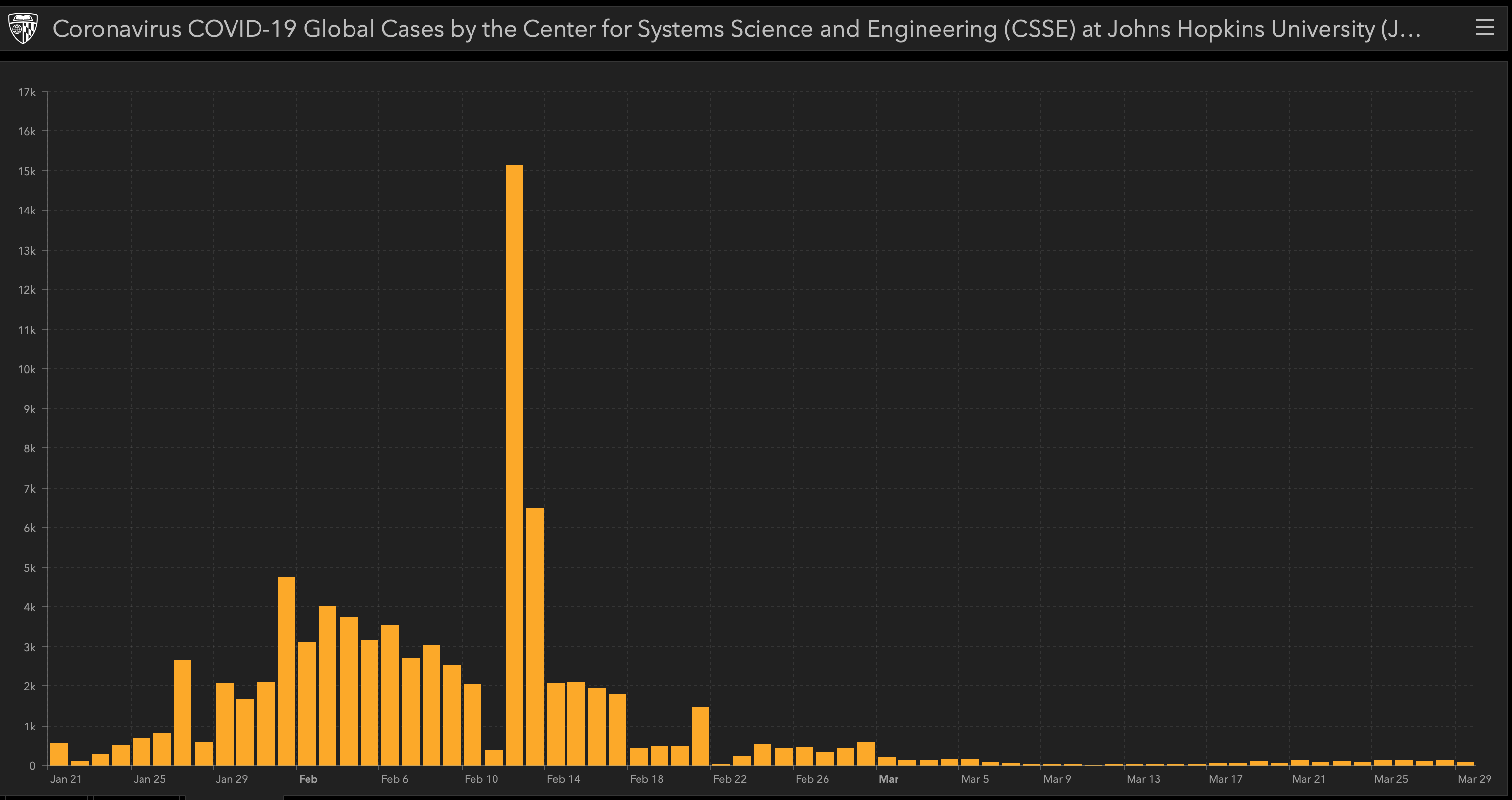Top news, reports and insights for today:
- The White House predicts 200,000 US deaths even in the best-case scenario.
The Washington Post and others are reporting on the latest warnings from the White House coronavirus coordinator suggesting that up to 200,000 deaths are projected in the US. This is described as a ‘best-case scenario’. These projections appear to be behind the President’s recent decision to extend social distancing guidance till the end of April. The US now reports 162,000+ cases and 2,958 deaths (with Washington State not reporting). Most experts believe the peak in US cases is still weeks away. On Monday, 517 new deaths were reported, a jump of 21% with notable rises in Maryland (+48%), Tennessee (+80%), Ohio (+34%), and Michigan (+39%).
What does it mean? It is not clear where the White House projections are coming from. To forecast the number of US deaths, we need to know 2 critical pieces of information: the attack rate (what percentage of American’s will be infected over the next two years) and the case-fatality rate (the percentage of infections that will end in death). Right now, we don’t know those numbers with any accuracy. Our confidence is starting to improve however. I review the models and projections from the top experts on a regular basis. The trend in projections suggests that the number of deaths will unfortunately be considerably higher than the Whitehouse numbers. The estimates I trust the most right now suggest between 450,000 and 1,500,000 deaths. The President’s numbers indeed represent best-case expectations. It is still too early to have confidence in any single number. What is clear is that the impact of the COVID-19 pandemic will be substantial and unprecidented in our lifetimes. - So what the heck is the mortality rate for COVID-19?
Last night I looked carefully at mortality rates across 2 dozen countries where the pandemic is established. If testing was far enough along that we were capturing 90% or more of all cases, and if we were able to identify everyone who dies of COVID-19, we would expect the case-fatality rate (CFR) to be roughly similar among at least developed nations with good health care. On March 3, the WHO announced that their estimate of the case-fatality rate is 3.4%. Most experts believe this estimate is too high. So, until we know what the CFR really is, we can estimate by computing a simpler number: the crude fatality ratio (deaths divided by confirmed cases). I made the graph below to summarize what we now see. It’s a very confusing picture. The good news is that the average of these mortality rates is 2.7%, which is not that far from the WHO estimate. The surprise here is that the estimates are so very different and inconsistent. They range from a stratospheric 11.4% in Italy, to Iceland at only 0.2%. The standard deviation (for you nerds out there) is a whopping 5%.
What does this mean? Basically this tells us that we don’t yet know the true CFR. Looking at the extremes, the 11% death ratio in Italy is most likely due to the fact that only severe cases are being tested due to stress on the health sector. When a health system is overwhelmed keeping people alive, surveillance goes to the back burner. On the other hand, Iceland’s number (0.2%) is probably the estimate that is closest to the real CFR. That’s because Iceland has tested more of their citizens than any other country by far (4,800 per 100,000). Compare that to the US where only 400 per 100,000 have been tested. Because they are testing virtually everyone in Iceland, they capture the highest proportion of all cases, making their fatality ratio most likely to be accurate. Based on all of this, my own estimate (shared by others) is that the CFR will end up being somewhere between 0.5% and 1.5% depending on where you are.

- Workers strike at Amazon, Instacart and Whole Foods over safety concerns
As Americans shift their shopping and purchasing online, the web-based retail giants are struggling to keep up with the demand. As reported today by USA TODAY, stay-at-home measures have created a frenzied work pace at shopping sites. This week, workers have said they have had enough of long hours and unsafe conditions. Amazon warehouse employees on Staten Island New York walked out at lunch yesterday over concerns about workplace safety. The grocery delivery service Instacart is facing a nationwide strike over similar concerns. Amazon workers across the country are warning of a nationwide “sick out” over conditions and pay. Some workers have been fired for making waves. Warehouse workers argue that they are not being given adequate protective equipment to protect themselves and their families. Sound familiar? Business Insider reports that Amazon prime deliveres are delayed for up to a month as the company struggles with the crush of online orders and problems keeping their pipeline adequately staffed. - Experts question China’s numbers, asymptomatic cases not counted
The world has looked to China’s experience with the COVID-19 outbreak for benchmarks and insight. After spending the first weeks of the pandemic on center-stage, the Chinese have claimed success in controlling the epidemic through drastic outbreak control measures. The Wall Street Journal (article not freely available) reports on new concerns about the reliability of Chinese numbers. The graph below shows the daily tally of new cases from China since the epidemic started in January. It shows that new cases slowed to a trickle by February 14 and have remained very low ever since. Only 76 new cases were recorded on March 29. The WSJ reports that more than 1,500 infections that showed no symptoms were not included in their count. At very least, caution is warranted in reading the data coming from China.
